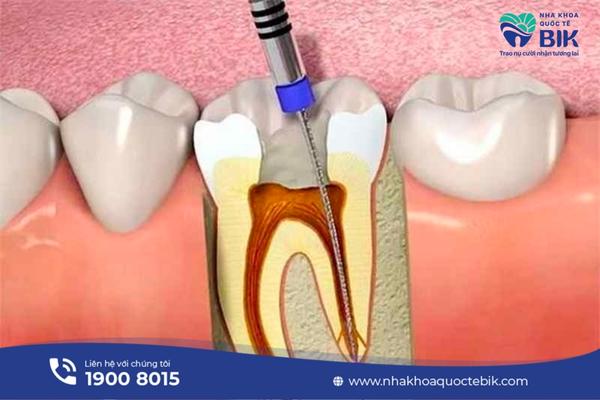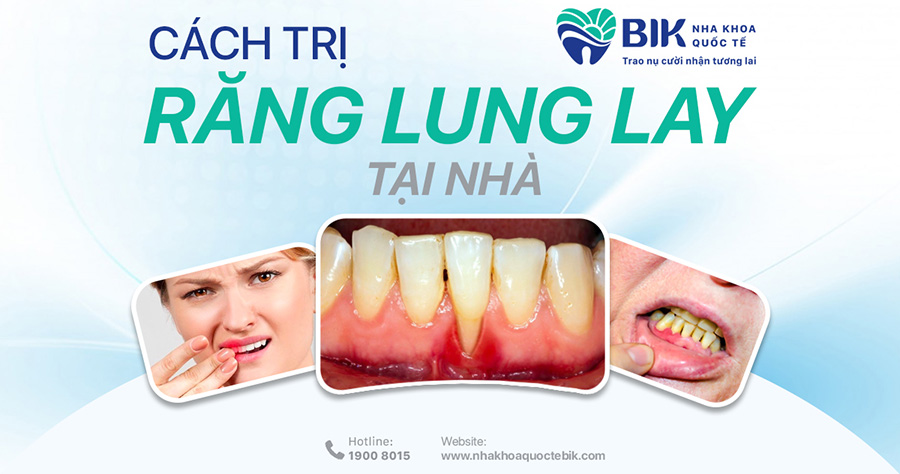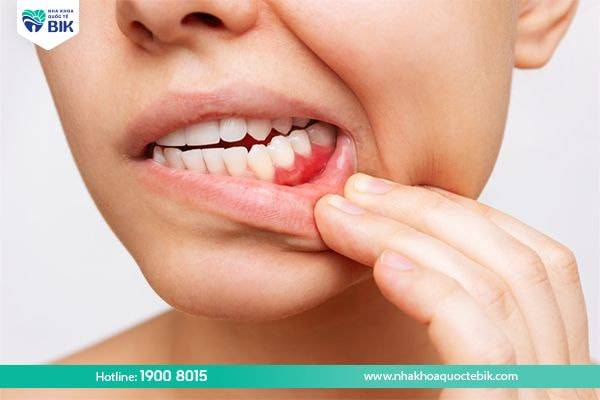Gum recession occurs when the gums are infected and attacked by harmful bacteria for a long time. The gums will become weak and no longer strong enough to hold the teeth, so the teeth can become loose. To overcome this condition, patients need to go to the dentist to find out the cause of gum recession and then treat it thoroughly to have healthy gums like before.
1. What is gum recession?
Gum recession is a condition in which the gums are pulled back towards the tooth root, causing the tooth root to be exposed quite a bit. Therefore, most cases of gum recession often appear in the elderly, but sometimes young people will also experience it due to many factors.
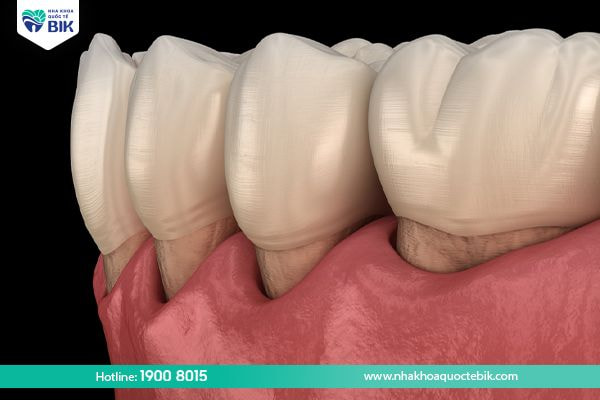
In the early stages, gum recession often does not cause discomfort to the patient, so it is often ignored and not treated promptly. Symptoms of gum recession can be listed as follows:
– Gums are dark red and swollen, often bleeding when cleaning teeth.
– The gums appear gaps, not hugging the tooth roots.
– Teeth become more sensitive when exposed to spicy, sour, hot or cold foods.
– The distance between teeth begins to gradually shift apart because the gums are no longer strong enough to hold the teeth firmly,
– Bad breath.
2. Causes of gum recession
The following factors can cause gum recession:
2.1. Due to other diseases
People with oral inflammatory diseases such as periodontitis, periodontitis, gingivitis, etc., if not treated early, the disease will progress more severely and increase the risk of gum recession.
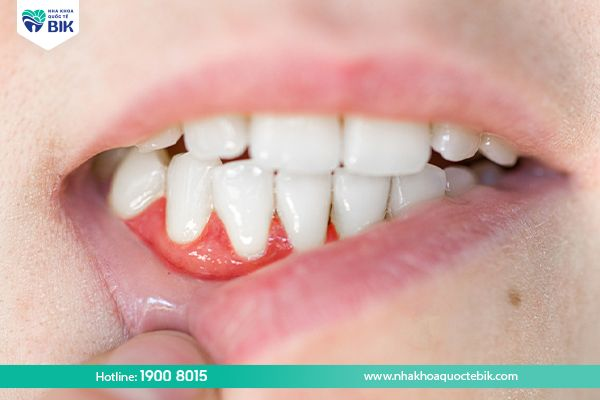
2.2. Due to oral hygiene habits
Using a toothbrush that is too hard with strong brushing force and brushing horizontally will damage the gums. In addition, not brushing your teeth regularly also makes it easy for bacteria to accumulate and attack, causing gum recession.
2.3. Due to congenital tooth structure
Studies have shown that patients with receding gums are often accompanied by a fairly high level of misaligned teeth. In addition, congenitally narrowed gums can also be the cause of gum recession during the treatment of gingival stenosis.
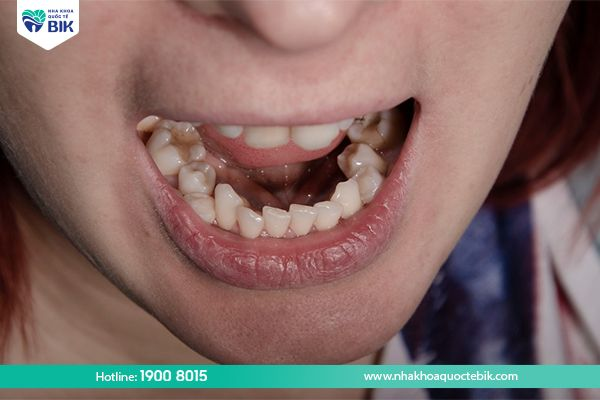
2.4. Other factors
– An inadequate diet, a lack of calcium, vitamin C, etc. in the body, increases the risk of gingivitis due to insufficient resistance when attacked by bacteria.
– Regular smoking is also very harmful to the human immune system. When the immune system is weakened, it is easier to get oral diseases.
– Bad habits of children such as chewing gum, sucking pencils, sucking fingers, etc. will all affect the structure of teeth and gums.
3. What are the effects of gum recession?
Gingival recession can occur anywhere in both the upper and lower jaws, but most often occurs in the lower jaw and around the teeth. If gum recession is not treated, the patient will first experience extremely uncomfortable pain or even headaches in severe cases. In addition, teeth are often sensitive, loose and at risk of tooth loss.
In addition, another easily recognizable effect of gum recession is the aesthetic problem. Gum recession causes the tooth root to be exposed and look longer, making it less aesthetically pleasing. Because of this, many people gradually become self-conscious when communicating or smiling, thereby losing many opportunities in work and life.

4. Effective treatment of gum recession
Depending on the degree of gum recession, the doctor will suggest a reasonable treatment method to bring the highest efficiency:
4.1. Mild gum recession
Mild gum recession is a condition that only occurs in one or a few tooth roots and the tooth roots are not exposed too much, the gums are still healthy enough to support the teeth. At this time, the patient only needs to be treated with simple methods. First, the dentist will remove tartar to eliminate the living environment of harmful bacteria, then prescribe the patient to use fluoride gel or medicine to treat gingivitis. In addition, the patient also needs to coordinate to implement a reasonable oral hygiene regimen after treatment at the dentist.
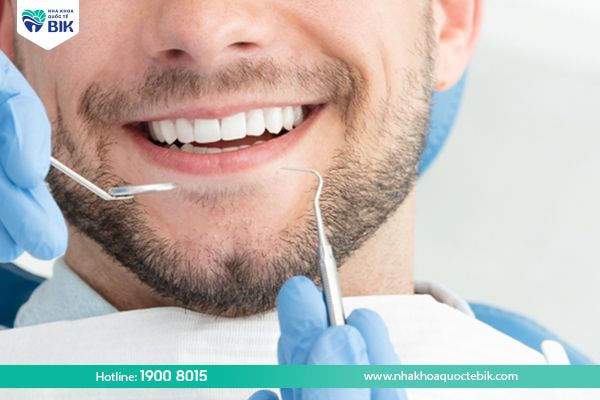
4.2. Severe gum recession
Severe gum recession is manifested in the appearance of many teeth, the tooth roots are exposed and the gums are red, inflamed, swollen and no longer strong enough to hold the tooth roots. At this time, the doctor is forced to prescribe gum recession surgery methods:
– Pocket reduction surgery: The doctor will make a small incision in the gum to expose the tooth roots, creating space to perform more effective scaling and root planing.
– Connective tissue grafting: The doctor will take a small amount of tissue from the palate or from another location to fill in the missing gum area. This technique helps reduce the coverage of the exposed tooth root and increases aesthetics.
– Bone grafting: In cases where the patient has damaged bone around the tooth, the doctor will prescribe this method. Bone grafting helps prevent tooth loss by creating a foundation, holding the tooth in place.

5. Oral care to prevent gum recession
– Brush your teeth at least 3 times a day, morning and evening and especially after each meal.
– Choose a toothbrush with soft bristles and pay attention to brushing with moderate force to avoid damaging the gums.
– Use toothpaste containing fluoride to support healthy teeth.
– Replace toothpicks with dental floss to remove food debris between teeth to avoid gums being touched by sharp objects.
– Visit the dentist regularly at least twice a year to ensure regular check-ups of oral health.

So the cause of receding gums can be due to other oral diseases or mainly due to improper oral hygiene. As soon as you detect signs of gum recession, you should go to a reputable dental facility for examination and proper treatment to help prevent serious complications later.

